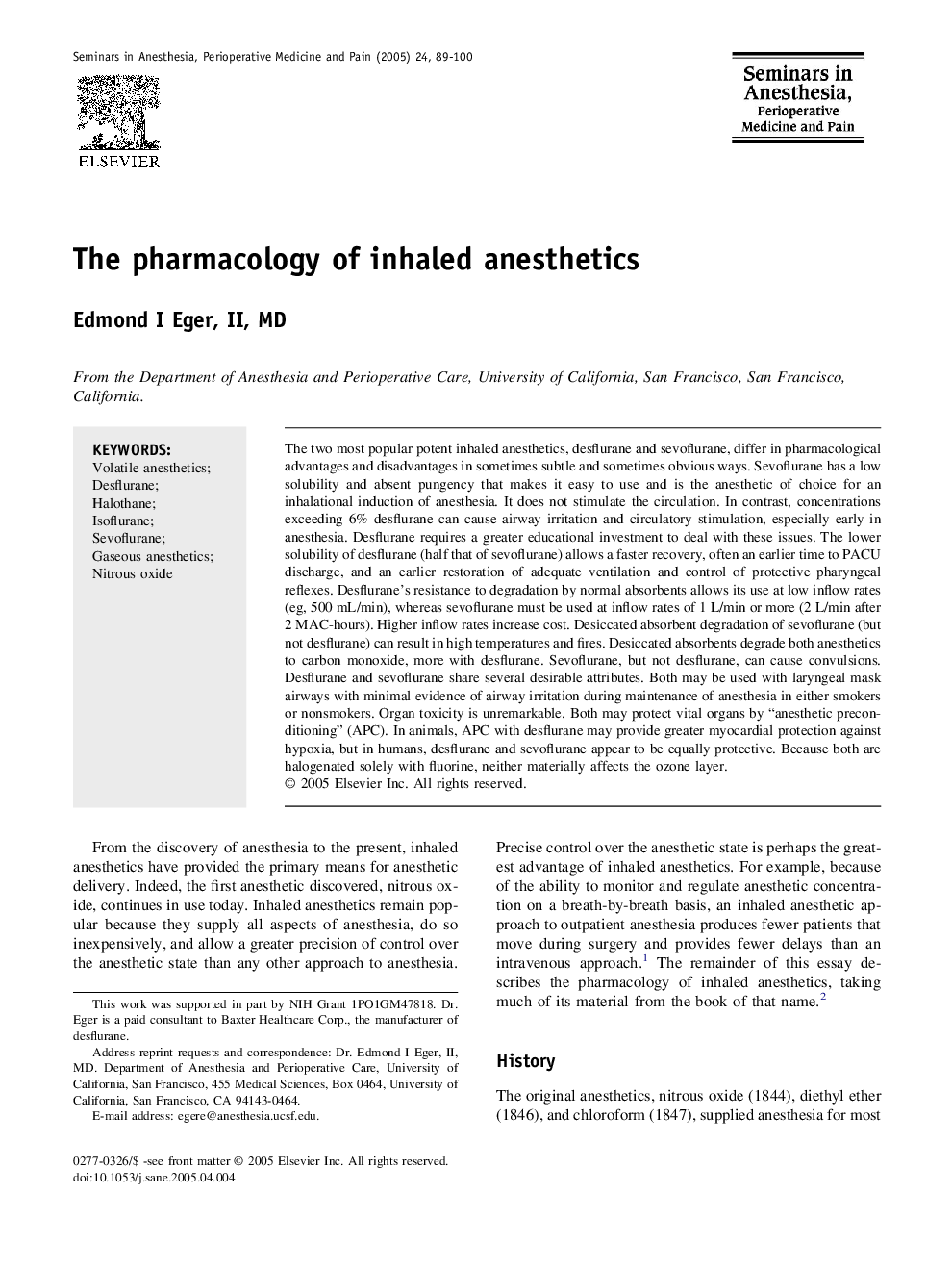| Article ID | Journal | Published Year | Pages | File Type |
|---|---|---|---|---|
| 9101147 | Seminars in Anesthesia, Perioperative Medicine and Pain | 2005 | 12 Pages |
Abstract
The two most popular potent inhaled anesthetics, desflurane and sevoflurane, differ in pharmacological advantages and disadvantages in sometimes subtle and sometimes obvious ways. Sevoflurane has a low solubility and absent pungency that makes it easy to use and is the anesthetic of choice for an inhalational induction of anesthesia. It does not stimulate the circulation. In contrast, concentrations exceeding 6% desflurane can cause airway irritation and circulatory stimulation, especially early in anesthesia. Desflurane requires a greater educational investment to deal with these issues. The lower solubility of desflurane (half that of sevoflurane) allows a faster recovery, often an earlier time to PACU discharge, and an earlier restoration of adequate ventilation and control of protective pharyngeal reflexes. Desflurane's resistance to degradation by normal absorbents allows its use at low inflow rates (eg, 500 mL/min), whereas sevoflurane must be used at inflow rates of 1 L/min or more (2 L/min after 2 MAC-hours). Higher inflow rates increase cost. Desiccated absorbent degradation of sevoflurane (but not desflurane) can result in high temperatures and fires. Desiccated absorbents degrade both anesthetics to carbon monoxide, more with desflurane. Sevoflurane, but not desflurane, can cause convulsions. Desflurane and sevoflurane share several desirable attributes. Both may be used with laryngeal mask airways with minimal evidence of airway irritation during maintenance of anesthesia in either smokers or nonsmokers. Organ toxicity is unremarkable. Both may protect vital organs by “anesthetic preconditioning” (APC). In animals, APC with desflurane may provide greater myocardial protection against hypoxia, but in humans, desflurane and sevoflurane appear to be equally protective. Because both are halogenated solely with fluorine, neither materially affects the ozone layer.
Related Topics
Health Sciences
Medicine and Dentistry
Anesthesiology and Pain Medicine
Authors
Edmond I. MD,
